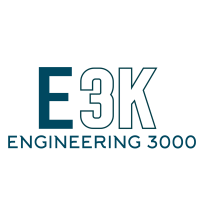Your business can utilise a 3D rapid prototyping service to boost your time to market and create better products. This is the rapid, iterative creation of physical models from digital designs to test, refine, and validate product concepts before mass production. An additive manufacturing process like this uses computer-controlled layer-by-layer material deposition, allowing for quick transformations from digital files to tangible objects.
Businesses benefit from reduced costs, faster time-to-market by enabling quick iterations, improved design creativity, and the ability to test functionality and fit early in the product development cycle. Let’s go over how engineers optimise the 3D printing process for fast, high-quality prototypes.
Can Businesses Benefit from Rapid Prototyping with 3D Printing?
How Does 3D Printing for Product Prototypes Work?
First, a 3D model is created using Computer-Aided Design (CAD) software. The 3D model is “sliced” into thin, horizontal layers, creating a digital file that instructs the 3D printer. Now, the 3D printer can build the prototype by adding material (such as plastic filament, powder, or resin) layer by layer, fusing or solidifying it under computer control. The physical prototype is then tested and evaluated, and any flaws are identified and corrected in the CAD file, leading to a new, improved prototype.
What are the Benefits of 3D Printing for Product Prototyping?
3D printing offers:
- Rapid Iteration: Quickly create multiple versions of a product to test different designs, materials, or features.
- Cost-Effectiveness: Significantly reduces costs compared to traditional manufacturing methods by minimising tooling costs and material waste.
- Speed to Market: Accelerates the design and development process, getting a product from concept to market faster.
- Improved Design Freedom: Enables the creation of complex geometries and intricate details that would be difficult or impossible with other processes.
- Testing & Validation: Allows for physical testing of form, fit, and even functionality early in the design process, reducing the risk of costly errors in later stages.
- Enhanced Communication: Provides a tangible, high-quality model that can be used to impress investors and stakeholders, leading to better feedback and investment opportunities.
How do Product Design Engineers Optimise 3D Printing Processes?
Product design and rapid prototyping engineers are experts at optimising 3D printing to improve your business’s product design process. They use skills like:
Design Strategies
- Generative Design: AI-powered tools can create optimised part geometries that are lightweight, strong, and meet specific functional requirements and constraints, allowing for consolidated, single-part designs that replace complex assemblies.
- Hollowing and Lattices: For large parts or when stiffness is needed without excessive material use, engineers can design hollow structures or incorporate lattices to reduce material and weight.
- Design for Manufacturing (DFM): This involves designing parts with features like self-supporting angles, fillets, and chamfers to minimise the need for support structures, which saves material and post-processing time.
- Optimised Wall Thickness: Walls are designed to be thick enough to maintain structural integrity and prevent warping, but not excessively so, to balance strength with print time and material consumption.
- Consolidated Assemblies: Multiple components can be designed as a single 3D-printed part, which reduces assembly steps and potential points of failure.
Process & Software Optimisation
- Material Selection: Engineers choose the most suitable material based on the prototype’s intended use, considering requirements for strength, flexibility, heat resistance, or other properties.
- CAM Software and Slicing: Specialised software is used to convert CAD data into printer commands (slicing), with engineers customising hundreds of parameters like layer height, fan speeds, and support settings to tailor the print for specific requirements and conditions.
- Part Orientation: Orienting the part correctly on the print bed can minimise overhangs, reduce the amount of support material needed, and align primary load paths with the printer’s stronger axes.
Iterative Prototyping & Testing
- Continuous Iteration: 3D printing allows for multiple design iterations in a short timeframe. Engineers can print, test, and refine prototypes rapidly to identify flaws in functionality or aesthetics before moving to full-scale production.
- Real-World Testing: Physical prototypes are crucial for testing concepts and making decisions based on tangible results, bridging the gap between 3D models and real-world understanding.
- Anisotropy Consideration: Engineers must account for the direction-dependent properties (anisotropy) of 3D-printed parts and orient them so primary loads align with the stronger material axes to ensure performance and durability.
How to Find the Right 3D Printing Company
To find the right company offering rapid prototyping for product design, research companies’ experience and track record, compare their technology and materials offered, evaluate their quality control and support services, and consider factors like cost, turnaround time, and location. Look for providers with expertise in the specific 3D printing technologies that best suit your project’s needs for material properties, accuracy, and speed. If you’re in Australia, you can trust Brisbane-based E3K.
Contact E3K
Are you ready to enhance your business by starting your rapid prototyping 3D printing journey? We specialise in mechanical engineering product design, and we’d love to chat about how we can help. Contact us today.

